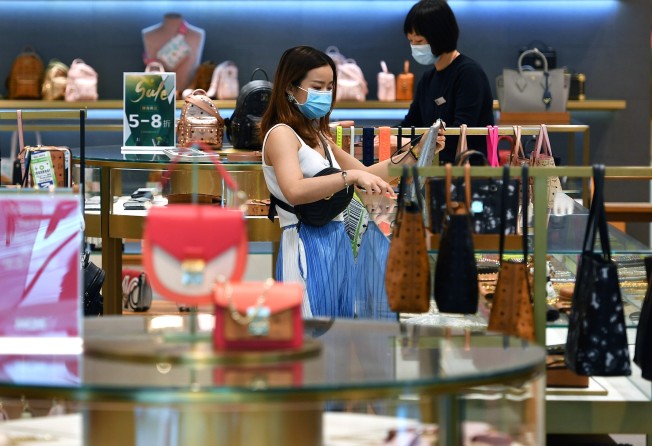China’s economic recovery continues as services sector grows at fastest pace in over two and a half years in August
- The official manufacturing purchasing managers’ index (PMI) was 51.0 for August, with a reading above 50.0 signifying growth in factory output
- Non-manufacturing PMI was 55.2, with both surveys now reporting positive outlooks for six consecutive months

China’s non-manufacturing sector expanded as its fastest pace since January 2018 last month, highlighting continued recovery in the economy from the coronavirus damage early in this year.
The official non-manufacturing purchasing managers’ index (PMI), released by the National Bureau of Statistics on Monday, was 55.2 for August, up from 54.2 in July and above analysts’ expectations that it would remain unchanged at 54.2.
This survey takes the mood among firms in the services and construction sectors, with the rate of expansions the fastest since it grew by 55.3 in January 2018.
Within the non-manufacturing index, sentiment in the construction sector dropped to 60.2 in August from 60.5 in July, while sentiment in the services sector rose to 54.3 from 53.1.
China’s official manufacturing PMI, meanwhile, fell slightly to 51.0 in August. This was below analysts’ expectations, with the median result of a Bloomberg survey predicting it would stay unchanged from July at 51.1.
A reading above 50 means growth in sector activity, while a reading below 50 means contraction. The higher the reading above 50, the faster sector growth.
The PMI is a sentiment gauge, conducted through a survey of factory owners and purchasing managers. It offers an early snapshot of the state of China’s economy during the just-concluded month, questioning operators on issues such as production, orders and hiring.
Combined, the surveys are a leading indicator used as a barometer for the economic health of the overall economy.
The composite PMI, which combines the two surveys, came in at 54.5 in August, up from 54.1 in July, signalling further growth in the Chinese economy.
This month [in the manufacturing sector], small firms accounted for over 50 per cent of companies that reported insufficient market demand and over 40 per cent that reported capital shortage
“This month [in the manufacturing sector], small firms accounted for over 50 per cent of companies that reported insufficient market demand and over 40 per cent that reported capital shortage respectively, their production and operation still face many difficulties,” said senior NBS statistician Zhao Qinghe.
“[While overall] production and operation activities of Chinese enterprises continue to recover.”
Both the manufacturing and non-manufacturing PMIs have now been in positive territory for six successive months, following the historic collapse in January and February that saw the manufacturing survey come in at 35.7 and non-manufacturing at 29.6.
China’s economy recovered from the 6.8 per cent contraction in the first quarter by bouncing back with an official growth rate of 3.2 per cent in the second quarter, and signs are pointing towards positive third-quarter growth.
With President Xi Jinping trying to steer the economy towards domestic consumption and self-reliance, policymakers may be pleased to see domestic orders improving.
The subindex for new export orders within manufacturing rose to 49.1 in August from 48.4 in July.
As there are signs of a second wave in the Eurozone, the pressure on exports is still in place
The employment subindex within the manufacturing PMI rose to 49.4 in August, a slight improvement from 49.3 in July, wile within the non-manufacturing PMI, the employment subindex rose to 48.3, up from 48.1 in July.
“The recovery of production has slowed, and [the activities] of small businesses has shrunk,” said Liang Zhonghua, chief macro-analyst at the research institute of Zhongtai Securities.
“The decline in export orders continues to narrow and short-term factors such as the export of anti-covid materials, the overseas pandemic and the relaxation of block measures in major economies still gives support to exports. But as there are signs of a second wave in the Eurozone, the pressure on exports is still in place.”